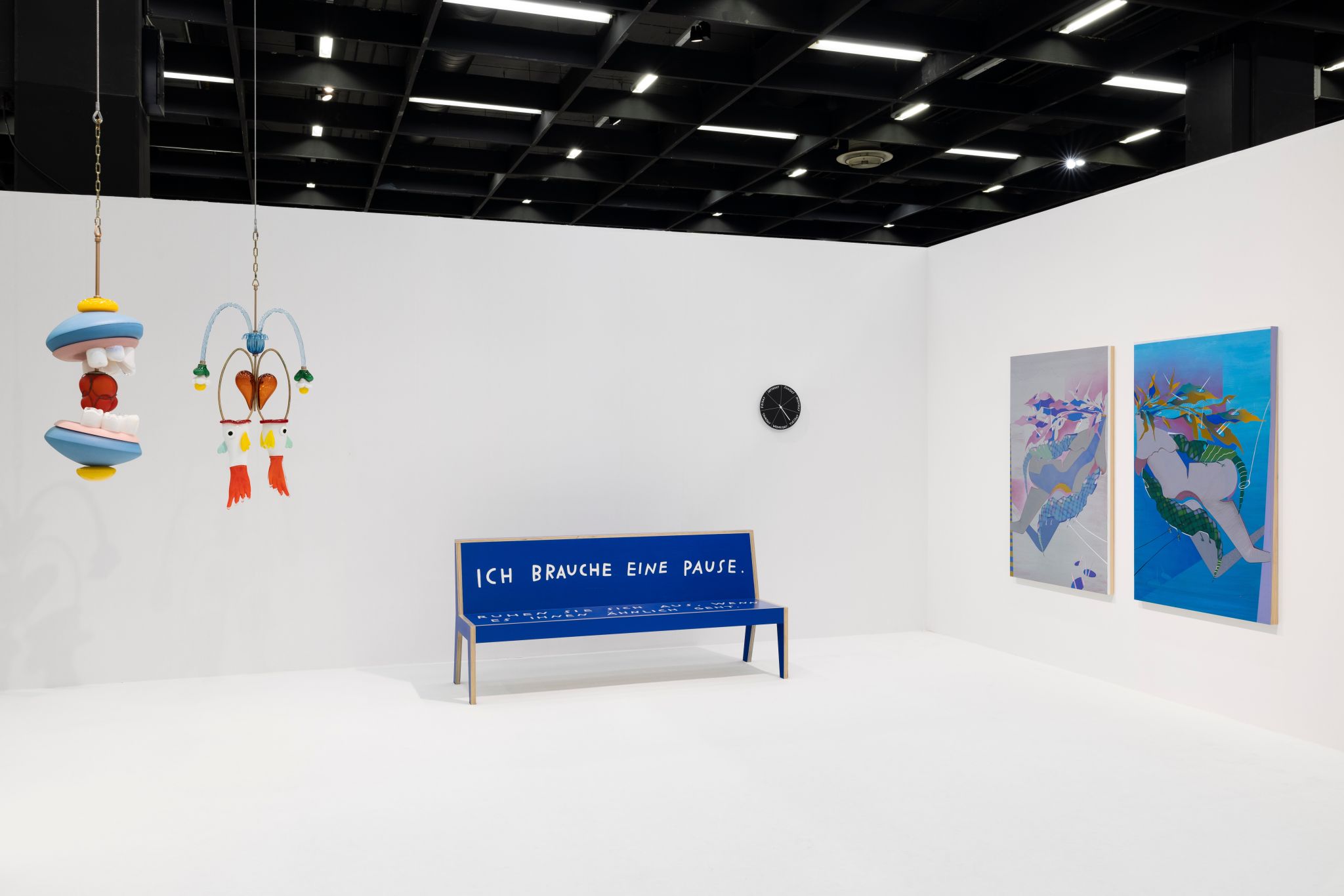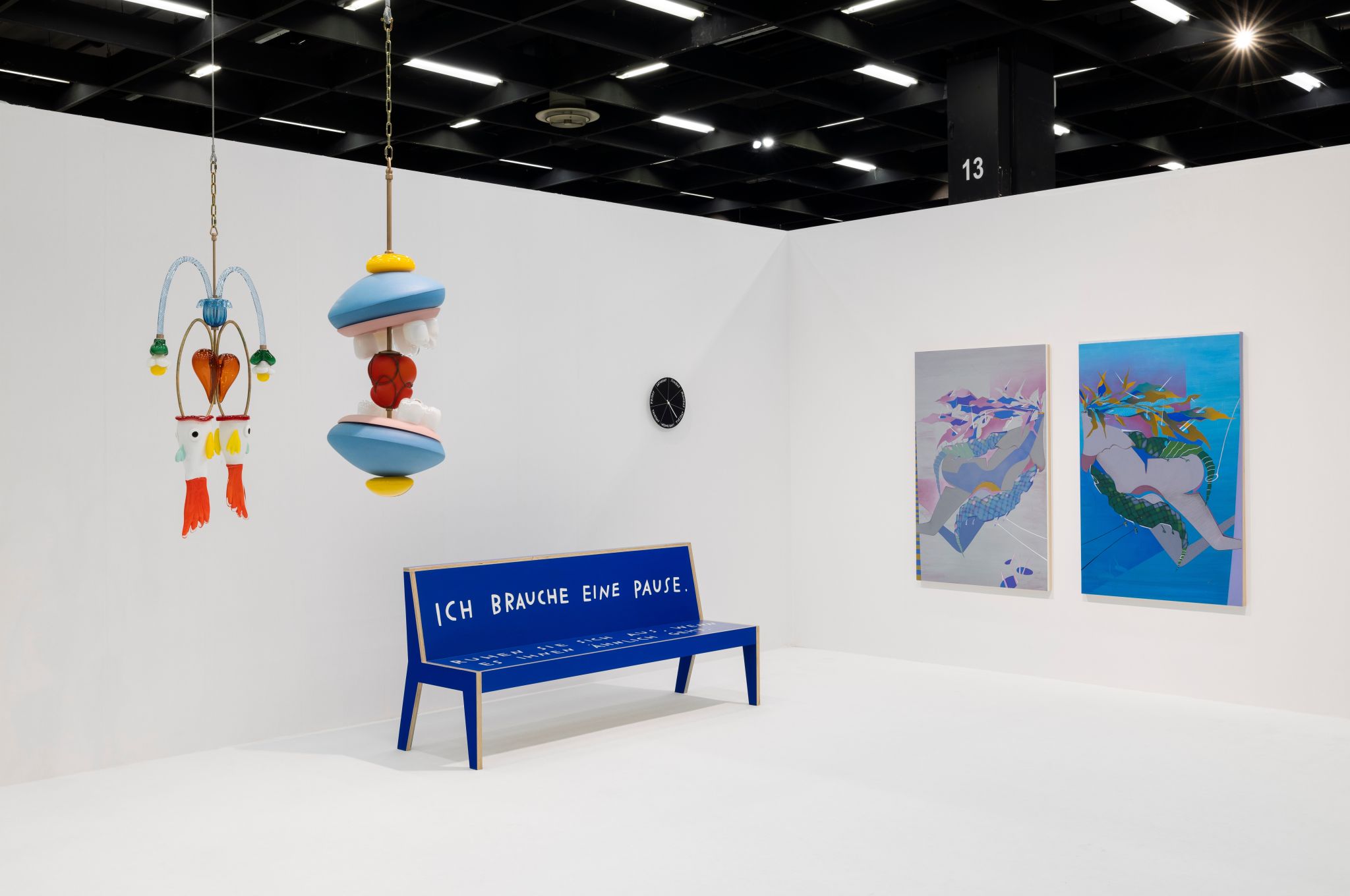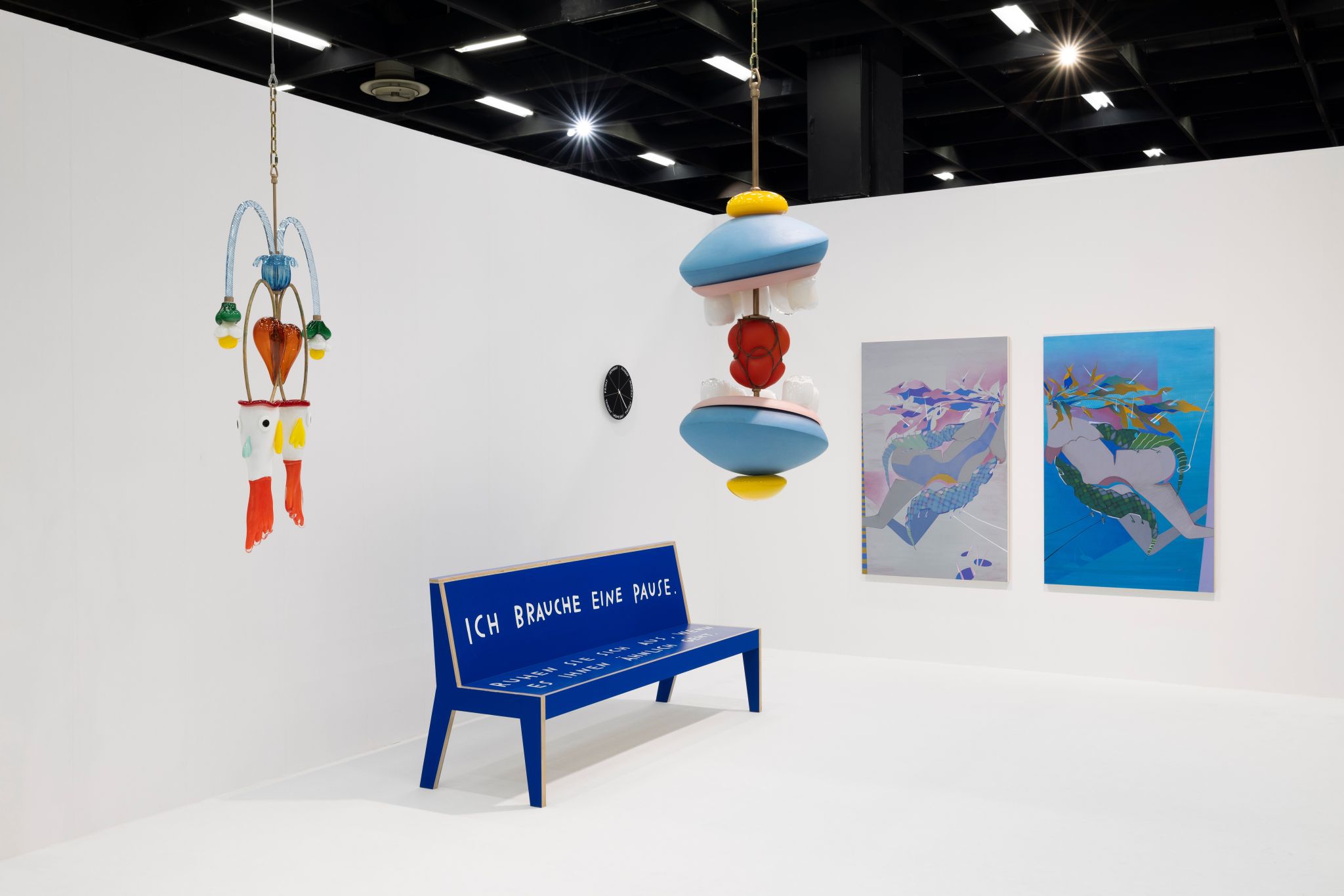In a wide range of media, Eric Sidner deals with the unconscious relation to popular culture. He is interested in the way relationships and identities are affected by the passive absorption of visual information. Drawing from various sources and a wide range of images, the hybrid forms of Sidner’s sculptural works, in particular, are the result of material experimentation, seeking to prompt diverse responses that do not require subtext. The works presented at Art Cologne 2022 are part of a new series of works. Opulent blown glass and cast bronze sculptures hover throughout the space. Produced in the Czech Republic by artisans using centuries-old Bohemian glass techniques, the hanging sculptures bring together an abundance of succulent and pneumatic forms. Constellations of visual motifs and abstract shapes are held together in delicate suspension from lost mould cast armatures, a process whereby the original sculptures, made of wicker, are entirely incinerated. While it is difficult to discern any specific references, the works generate an array of visual associations, ranging from cartoon animation to reliquaries, not to mention Venetian chandeliers (a comparison that is perhaps not merely superficial given their common Bohemian influences).
read more
The paintings of Maryam Hoseini share a common world. Figures repeat across distinct canvases and situations as if in a dream or a film. Their positions encompass the violent, the erotic, and anything in between. Stylistically flat, with figures overlapping and sometimes blending into landscapes and backgrounds, Hoseini’s paintings bear a relationship to the pixelations and squares of color that form our contemporary digital visuality. Maryam Hoseini utilizes painting and site-specific installation to investigate the political, social, and personal conditions of identity and gender in relation to the concept of ruins, displacement, and fracture. Her work explores the spaces in between painting and drawing, figuration and abstraction, and the subtle relationship between bodies, physical space, and the politics of narrative. Delicate pencil drawings on the surface of her paintings subvert the hierarchy between drawing and painting, lending the works a distinctly ‘unfinished’ quality. Much of Hoseini’s practice revolves around the concept of incompleteness.Multidisciplinary artist Finnegan Shannon inserts interventions into exhibition spaces to focus on their accessibility. The works reflect their overarching practice and its focus on accessibility on both physical and digital spaces. There are many places where no provisions seem to have been made for people and their basic physical needs, their tiredness and exhaustion, for example, within the white cube of the contemporary art world, in which furnishings themselves can become art. Shannon shows that access can only be ensured where the ideology of a conforming, normative body is unlearned and spaces are reconceived on the basis of multiple needs. In this way, the act of sitting recalls the sit- in as a protest form, with its occupation of space suggesting the presence of political bodies who often remain invisible at the protest marches where participants are required to be mobile. The day clocks Have you ever fallen in love with a clock? move so slowly that it’s hard to tell if they’re working at all. “What are the objects of disability culture?” Shannon asks.



